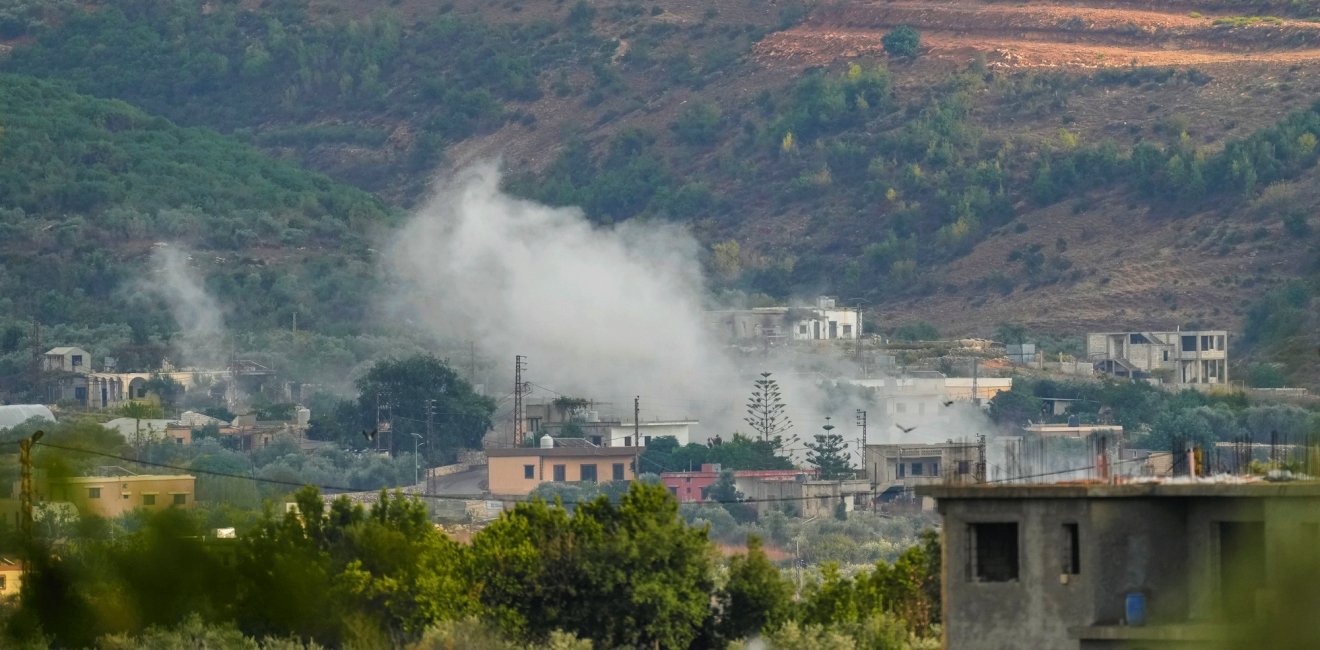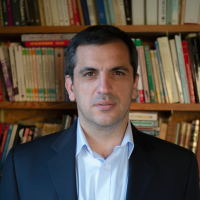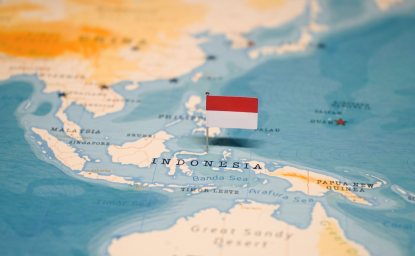There is a growing concern that Hezbollah will open another front against Israel in parallel to this latest round of conflict in Gaza, which prompted the Biden administration to deploy 2,000 non-combat US troops and two aircraft carriers to the Eastern Mediterranean as a deterrence to Iran and its allies. While the US and Iran have been trading messages and warnings through the media and intermediaries, Hezbollah and Israel have been pushing the envelope at the border, but they relatively remain within the rules of engagement set since the conclusion of the July 2006 conflict between Israel and Lebanon.
Hamas and Hezbollah
Moments after launching the attack on Israel, Hamas was expecting help from allies. Al-Qassam Brigade commander Muhammad Al-Deif said in announcing the attack on October 7, "Our brothers in the resistance in Lebanon, Syria, Iraq, and Iran, this is the day on which the fronts will unite." Israel immediately deployed armed vehicles and reinforced its troop levels on the Blue Line—the demarcated border between Lebanon and Israel. Within 24 hours, Hezbollah became the first willing Iranian proxy ready to help Hamas in Gaza with a combination of shelling Israeli military sites and conducting limited border infiltration. Senior Hezbollah official Sayyed Hashem Safieddine said on October 8," This battle is not only Gaza's battle," while adding that," we are not neutral."
Hamas could not have taken this detour back to "the axis of resistance" and realignment with Iran without Hezbollah's help.
Hamas could not have taken this detour back to "the axis of resistance" and realignment with Iran without Hezbollah's help. Hezbollah Secretary General Hassan Nasrallah has said that he personally invested in improving relations between Hamas and the Syrian regime to turn the page on their feud after the "Arab Spring." A Hamas delegation visited Damascus in October 2022; Hamas's political bureau chief, Ismail Haniyeh, traveled to Beirut in April and Tehran in June of this year. Just last month, Nasrallah hosted the Secretary General of the Islamic Jihad Movement, Ziad al-Nakhalah, and the deputy chief of Hamas's political bureau, Saleh al-Arouri.
Hence, there is no surprise that this was reflected by the limited operational mobility granted to these Palestinian groups in south Lebanon. Al-Quds Brigade, the military wing of Islamic Jihad, claimed responsibility for carrying out an infiltration into Israel from south Lebanon on October 9, which led to the killing of two Israeli soldiers and two Palestinian militants. The Israeli retaliation led to the killing of three Hezbollah members; hence, Hezbollah launched guided missiles and mortar shells at the command center of the Galilee Division and the Command Center of the Western Brigade. Hamas's al-Qassam Brigades also launched missile strikes on October 10 from south Lebanon on the Western Galilee. These Palestinian activities would not have happened without at least Hezbollah's knowledge. Hamas and Islamic Jihad seem to be pressuring Hezbollah to act on the Lebanese border while Hezbollah appears cautious and perplexed between the need to support their peers in Gaza and the limitations of the Lebanese status quo that inhibits such an adventure.
While the Biden administration has stated that there is no evidence yet about the Iranian involvement in the Gaza attack, it has actively sought to deter any Iranian intervention in the conflict it triggered.
The US and Iran exchange threats
While the Biden administration has stated that there is no evidence yet about the Iranian involvement in the Gaza attack, it has actively sought to deter any Iranian intervention in the conflict it triggered. The USS Gerald R. Ford Strike Group deployed to conduct maritime and air operations in the Eastern Mediterranean was meant, according to the Pentagon, to show "US support for Israel's defense and serve as a deterrent signal to Iran, Lebanese Hezbollah, and any other proxy across the region who might be considering exploiting the current situation to escalate the conflict. Those adversaries should think twice." While singling out Hezbollah as a reason to send the US carrier restricts its moves, it also emboldens its regional status and narrative.
Tensions between Israel and Hezbollah have intensified recently but remained cross-border as Iran seemed to be taking full ownership in calling the shots, which might be due to two main reasons. First, there appears to be a difference between Hezbollah and Hamas in the extent of their commitment to opening multiple fronts against Israel. Top Hamas leader Khalid Meshaal said that Hezbollah "has thankfully taken steps, but the battle requires more." Iranian Foreign Minister Hossein Amir Abdollahian met with Nasrallah in Beirut on October 13 and Haniyeh in Doha on October 14, which set the tone for both groups. Hezbollah seems now to have reined in the activities of Hamas and Islamic Jihad in south Lebanon, hence sending the message that Palestinian groups better not to operate in Hezbollah-controlled territories.
Second, the US entering the conflict with aircraft and troops means that Iran can no longer lead from behind. Abdollahian said, "If the war crimes against the Palestinians are not immediately stopped, other multiple fronts will open." The US and Iran exchange diplomatic messages and warnings through intermediaries to limit potential escalation, which was evident in delaying the possible ground invasion of Gaza and in Hezbollah showing restraint at the border. This American-Iranian back and forth limits Hezbollah's margin of activities until Iran decides whether to shift to confrontation mode or not; however, the Biden administration might not have similar leverage over Israeli Prime Minister Benjamin Netanyahu.
As the talk about a potential ground Israeli invasion of Gaza is brewing after Biden's visit to Israel, the US is seeking to mitigate tensions, with Biden denying on October 18 Israeli reports that the US has indicated readiness to join the fight if Hezbollah initiates a war against Israel. Iran, meanwhile, is now increasing the pressure on this US approach with three drones targeting al-Asad airbase in western Iraq and another US base in northern Iraq, as the Iraqi Hezbollah Brigades vowed to join the battle in Gaza and increase the pace of attacks on US targets in Iraq.
The question is: to what extent can Hezbollah stay patient if an Israeli ground invasion begins in Gaza or the Palestinian death toll significantly increases?
Pushing the envelope
While these activities are unusual on a relatively stable border, they remain limited and have yet to expand in scope and depth. The exchange of fire between Hezbollah and Israel is expected to continue as Hezbollah keeps Israel on its toes as a psychological deterrence to any Israeli ground invasion of Gaza. The Biden administration aims to have Iran and its allies idle so Israel can have the space and time to retaliate against Hamas, while Washington is trying to keep the Israeli government in check by not going overboard in its reaction. The question is: to what extent can Hezbollah stay patient if an Israeli ground invasion begins in Gaza or the Palestinian death toll significantly increases?
It is a balancing act for all actors involved as southern Lebanon and Gaza became somehow entangled. There has long been a myth about the idea of multiple fronts consisting of Iranian proxies against Israel, but the connectivity of these fronts is not coherent, as each has its own set of calculations and local dynamics. Tensions are running high between Israel and Hezbollah, and both are in a state of alert, wary of each other's intentions and of every move; there is always a risk of miscalculation and unintentional escalation in such a hostile environment. Once the conflict in Gaza eventually winds down, Israel and Hezbollah return to business as usual, managing the United Nations Security Council Resolution 1701 that still stands until further notice.
The views expressed in these articles are those of the author and do not reflect an official position of the Wilson Center.






